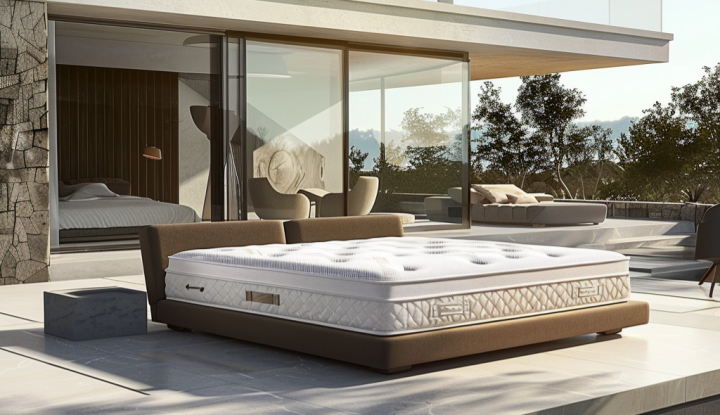Types of Mattresses
Innerspring Mattresses:
- Structure: Metal coils with foam or padding layers.
- Pros: Good support and breathability.
- Cons: Can be noisy and wear out faster.
Memory Foam Mattresses:
- Structure: Viscoelastic foam.
- Pros: Excellent pressure relief and motion isolation.
- Cons: Can retain heat and have initial off-gassing.
Latex Mattresses:
- Structure: Natural or synthetic latex.
- Pros: Hypoallergenic, durable, and temperature-regulating.
- Cons: Expensive and heavy.
Hybrid Mattresses:
- Structure: Coils with foam or latex layers.
- Pros: Balanced support and comfort.
- Cons: Can be heavy and pricey.
Airbed Mattresses:
- Structure: Adjustable air chambers.
- Pros: Customizable firmness.
- Cons: Expensive and maintenance-heavy.
Key Features to Consider
Firmness:
- Side Sleepers: Softer for shoulder and hip relief.
- Back Sleepers: Medium to firm for spinal alignment.
- Stomach Sleepers: Firmer to prevent sinking.
Support:
- Supports spine in a neutral position.
Pressure Relief:
- Good for joints, especially with memory foam or latex.
Temperature Regulation:
- Cooling features like gel-infused foam or breathable covers.
Motion Isolation:
- Important for couples; best with memory foam or latex.
Durability:
- High-quality materials ensure longevity.
Edge Support:
- Essential if you sit or sleep near the edge.
Tips for Choosing the Best Mattress
- Test the Mattress: Try in-store or use online trial periods.
- Consider Your Budget: Invest wisely in quality.
- Read Reviews: Check customer feedback and expert opinions.
- Check the Warranty: Ensure it covers manufacturing defects.
- Understand Return Policies: Know the terms for returns.
Conclusion
Selecting the right mattress involves understanding types, key features, and following practical tips. A well-chosen mattress improves sleep quality and overall health.
